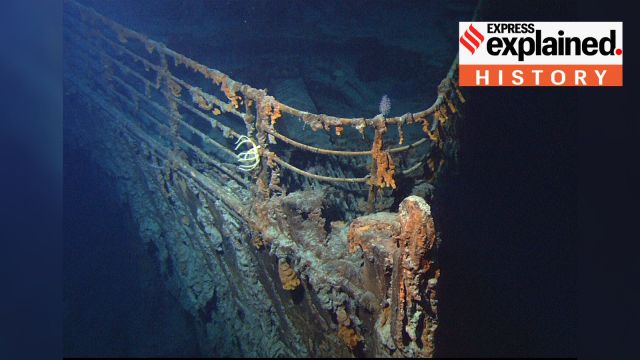But even before Hollywood, Titanic had captivated the world. Proposals to locate its wreckage were put forth since 1912, but could not be immediately realised. What then inspired American oceanographer Robert Ballard to find the sunken ship and how did he finally succeed in his mission on September 1, 1985? We recall.

Why did it take decades to locate the Titanic wreckage?
The Titanic sank following its collision with an iceberg on April 14, 1912. While 706 people made it to the lifeboats and survived the disaster, 1,517 people died. Calls to find the wreckage soon after the sinking were put forth by relatives of the wealthier passengers who wished to bring the ship’s remains to the surface and secure their belongings.
The wreckage sat in the Atlantic Ocean at around 12,500 ft or around 3,810 metres. For reference, Mount Everest is 8,849 metres high. This depth presented problems of high air pressure, and a “variety of audacious & impractical schemes were proposed” to overcome this problem, according to the Titanic Belfast monument’s website. Some ideas included “using balloons & electromagnets to float the ship to the surface. However, all of these fell foul due to practical and technological difficulties, as well as a lack of funding and… understanding of conditions at the wreck site.”
What was Robert Ballard’s aim behind finding the Titanic wreckage?
Ballard joined the Woods Hole Oceanographic Institution in Massachusetts in 1967, as a young scientist and ensign in the US Navy. In his book The Discovery of the Titanic, he wrote how he soon enrolled in the Boston Sea Rovers, one of the oldest diving clubs in the world, cultivating his interest in deep-sea exploration.
Further, Woods Hole geophysicists were well-regarded as they helped gather important information about the ocean floor and the movement of the earth’s crust in the 1960s. “The Institution had grown with the boom in oceanography that happened when the space program was in its heyday, a time when there was talk of “wet NASA” concepts for the conquest of the oceans,” he wrote, describing it as “a unique American phenomenon — a blend of cloistered academe and competitive free enterprise.”
The lore associated with the Titanic, the biggest ship of its time, had long intrigued explorers. The improvements in technology helped prepare the ground for Ballard’s dive. For instance, the steel hull of the deep-dive submersible Alvin saw its steel hull replaced with a titanium alloy. This doubled the sub’s maximum depth to 13,000 feet, “sufficient to dive to the crest of the Mid-Atlantic Ridge — and, incidentally, just enough to reach the ocean floor in the region where the Titanic had sunk.”
Story continues below this ad
After a failed expedition in 1977, Ballard tried again in 1985 with the help of the French national oceanographic agency IFREMER and explorer Jean-Louis Michel. While this attempt was funded by the US Navy, he was also tasked with using the funds to locate the Thresher and the Scorpion, two submarines which had disappeared in the Atlantic in the 1960s. Ballard eventually found information about those submarines.
A system called Argo/Jason was used in the mission, where a remotely controlled deep-sea vehicle called Argo and a robot called Jason were deployed to take photos and assess the area. As their search drew to a close, the crew spotted remains of the Titanic in the early hours of September 1.
What did Ballard find in the Atlantic?
At a press conference, Ballard would tell the world, “The Titanic lies now in 13,000 feet of water on a gently sloping Alpine-looking countryside overlooking a small canyon below…Its bow faces north. The ship sits upright on its bottom with its mighty stacks pointed upward. There is no light at this great depth and little life can be found. It is a quiet and peaceful place—and a fitting place for the remains of this greatest of sea tragedies to rest. Forever may it remain that way. And may God bless these now-found souls.”
The discovery led to the revelation of crucial facts related to the sinking, including that the ship broke into two pieces as it sank. It also inspired other expeditions and a debate — whether materials from the wreckage should be brought to land or left untouched. Ballard was a proponent of the second approach.
Story continues below this ad
It also spoke to the marvels of modern technology. In an interview with CNN in 2021, he said that with private missions to space and the deep ocean announced in recent years, “the age of exploration” was just getting started.








































